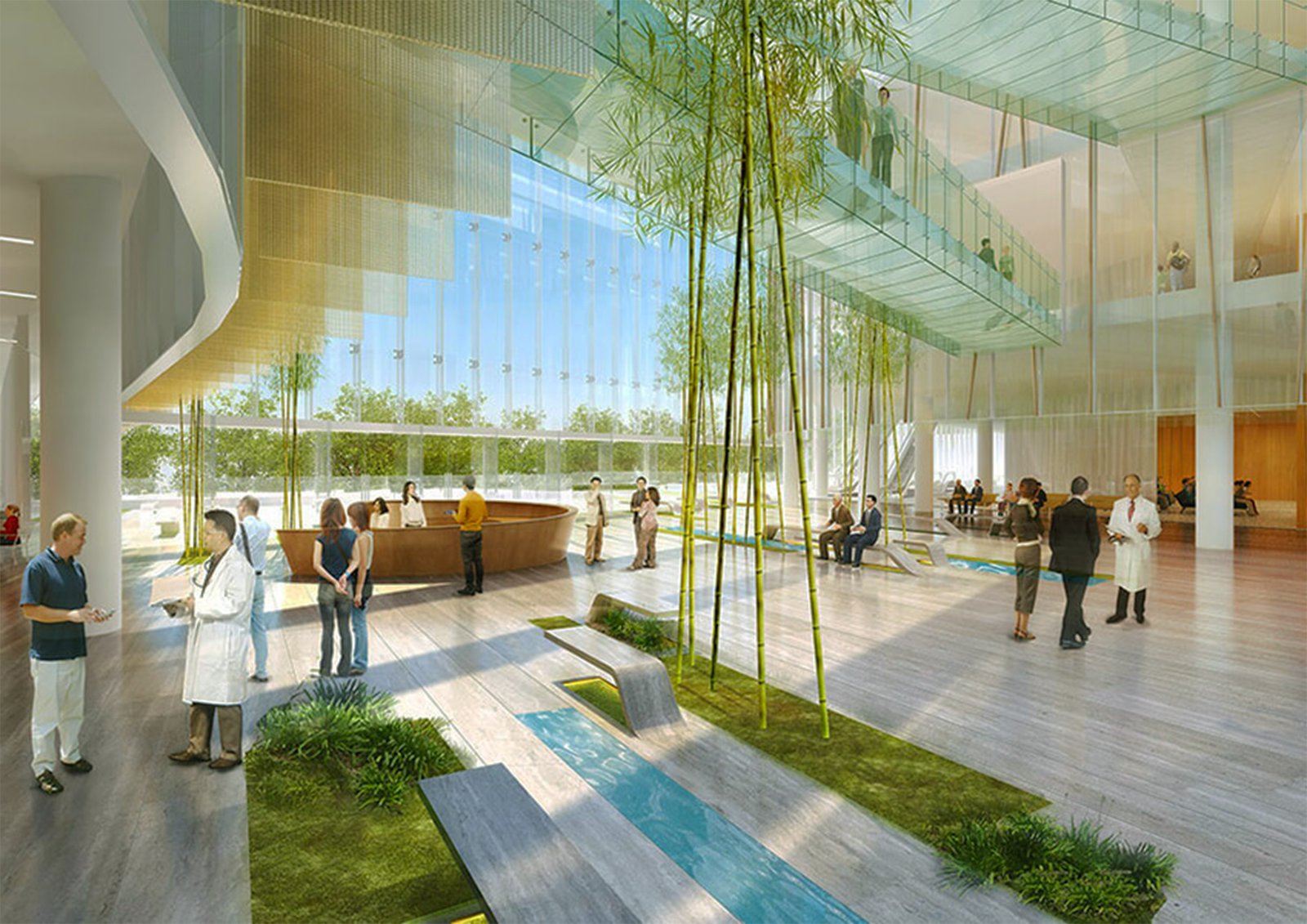As human beings, we have an innate quality of experiencing certain emotions while walking down a particular space. There is a fourth dimension to Architectural design that cannot be seen but only experienced. Spaces designed for healing are often underestimated in terms of materiality and themes. The spaces which should help a person to heal often hinders the process and thus there is a need to have a holistic approach while designing healing spaces.
What are Healing spaces?
Healing spaces do not necessarily address to hospitals and clinics in any city, they refer to every space that helps us in recovering our illness by sensorial approach. These spaces not only change the mental state of a person but makes him aware of all the elements of our nature. Thus architecturally defining these spaces is not only important but necessary.
There are many healing centers, hospitals and therapy and meditation centers where spaces are designed close to nature using sensorial techniques. Unlike so many mindful ways, there is a combination of landscape and materials in coordination with light and wind.

How do healing spaces work?
Every ancient way of medicine and therapy is concentrated around the five elements of nature.
Earth- fire- water- air- space
Architecturally, we design spaces. It is about creating multiple volumes that reflect light in different ways or about the placement of any building according to the wind flow or around the biodiversity of the region. This creates a strong connection with nature and eventually allows us to experience our five senses. This is where the materiality in any Architectural space dives in! After regulating the outdoor factors, we step towards textures and colors and echo and smell that triggers us in any space.
Let us brief about the factors around which healing spaces function:
-
Implement passive techniques of heating and cooling-
Passive techniques cover all the local and primary techniques to change any space for better thermal comfort and living conditions. When a person is physically comfortable, he can walk towards better health and mindful thinking.
-
Build around nature:
Looking at the increasing number of urban settlements, it is impossible to always build healing spaces all around nature.
By nature, we are not suggesting to build these spaces in forests or natural habitats but taking smaller elements of nature inside your Architectural volumes. Planning airy interior spaces and inviting more natural light inside will brighten up a room instantly. The addition of plants in common spaces will also help in building a healthy environment.

-
Look outwards-
Most of the healing spaces have inward-looking designs- For example, long corridors and passageways that lead us to individual rooms and wards. While these concepts may fit in the regulations, they do not serve the purpose that they are built for and these designs are specifically incorporated when we build vertically in a crowded urban scenario.
We should imagine healing spaces in a geometrical or concentric way where all the units face outwards while the corridors and passages surround them externally.
-
Intelligent material selection-
It is more important to incorporate raw, minimal and vibrant material palette than choosing clean and monotonous. This means a person should feel a connection with space which triggers a feeling of calm and thoughtful harmony. Extremely light color shades or white is a common practice in healing spaces. It is always good to include a hint of bright color that changes the ambiance of the space.
On an urban level, every single space in our cities somehow causes a constant mental or physical illness and there is an urgent need for Architects, designers and urban planners to help tackle this problem. How do we do it?
We achieve this by De-cluttering the city and (literally) adding more nature and its elements into our cities. Designing parks and open spaces are not the only solutions to incorporate nature but designing Green pathways and walkways to take over our roads and adding green terraces and public water bodies can be one way to do this. Vibrant cities always promote more green corridors than concrete jungles and this is the way to build cities for ‘people’.
There is never one correct answer when architecturally designing spaces for people to heal mentally and physically. But in any dimension, elements of nature and human senses are prime factors around which Architecture for healing will always revolve!



